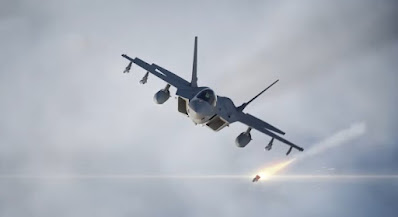The State Department has made a determination approving a possible Foreign Military Sale to the Government of Australia of MH-60R Multi-Mission Helicopters, Related Defense Services, and related equipment for an estimated cost of $985 million. The Defense Security Cooperation Agency delivered the required certification notifying Congress of this possible sale today.
The Government of Australia has requested to buy twelve (12) MH-60R Multi-Mission helicopters; thirty (30) T-700-GE-401C engines (24 installed, 6 spares); twelve (12) APS-153(V) Multi-Mode Radars (installed); twelve (12) AN/AAS-44C(V) Multi-Spectral Targeting Systems (installed); thirty-four (34) Embedded Global Positioning System/Precise Positioning Service (GPS/PPS)/Inertial Navigation Systems (EGI) with Selective Availability/Anti-Spoofing Module (SAASM) (24 installed, 10 spares); twenty (20) Link 16 Multifunctional Information Distribution Systems (MIDS) – Joint Tactical Radio System (JTRS) (12 installed, 8 spares); twelve (12) GAU-61 Digital Rocket Launchers (aircraft provisions only); twelve (12) Airborne Low Frequency Sonars (ALFS) (aircraft provisions only); eighteen (18) AN/AAR-47 Missile Warning Systems (12 installed, 6 spares); eighteen (18) AN/ALE-47 Chaff and Flare Dispenser, Electronic Countermeasures (12 installed, 6 spares); twelve (12) AN/ALQ-210 Electronic Support Measures (ESM) Systems (installed); twenty-four (24) M299 Missile Launchers; twelve (12) GAU-21 Crew Served Guns aircraft provisions (installed, includes aircraft adapter, ammunition bin, and other accessories); twelve (12) M240D Crew Served Gun Cradles (installed); and eighteen (18) AN/ARQ-59 Hawklink Radio Terminals (12 installed, 6 spares). Also included are AN/ARC-210 RT-2036 UHF/VHF radios with Communications Security (COMSEC); AN/APX-123 Identification Friend or Foe (IFF) transponders; KIV-78; KIV-6; KOV-21; KGV-135A; Advanced Data Transfer Systems (ADTS); Airborne Low Frequency Sonars (ALFS) Training Simulators/Operational Machine Interface Assistants (ATS OMIA); spare engine containers; trade studies with industry to determine the feasibility and cost of implementing provisions for additional passenger seating and modifications to achieve enhanced crew survivability; defense services; spare and repair parts; support and test equipment; communication equipment; ferry support; publications and technical documentation; personnel training and training equipment; United States (U.S.) Government and contractor engineering, technical, and logistics support services; obsolescence engineering, integration, and test activities required to ensure readiness for the production of the Australian MH-60R helicopters; and other related elements of programmatic, technical and logistics support. The total estimated value is $985 million.
This proposed sale will support the foreign policy and national security objectives of the United States.
Australia is one of our most important allies in the Western Pacific. The strategic location of this political and economic power contributes significantly to ensuring peace and economic stability in the region. It is vital to the U.S. national interest to assist our ally in developing and maintaining a strong and ready self-defense capability.
This proposed sale will improve Australia’s capability to perform anti-surface and anti-submarine warfare missions along with the ability to perform secondary missions including vertical replenishment, search and rescue, and communications relay. Australia will use the enhanced capability as a deterrent to regional threats and to strengthen its homeland defense. Australia will have no difficulty absorbing this equipment into its armed forces.
The proposed sale of this equipment will not alter the basic military balance in the region.
The principal U.S. contractor will be Lockheed Martin Rotary and Mission Systems, Owego, NY. There are no known offset agreements proposed in connection with this potential sale.
Implementation of the proposed sale will require U.S. Government and contractor personnel to visit Australia on a temporary basis in conjunction with program technical oversight and support requirements, including program and technical reviews.








